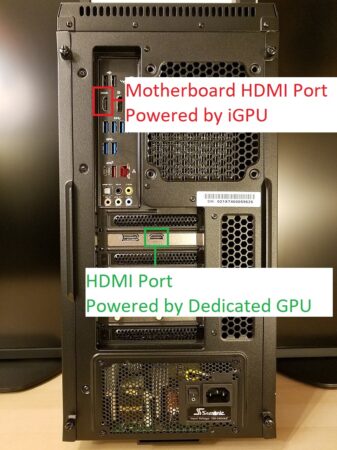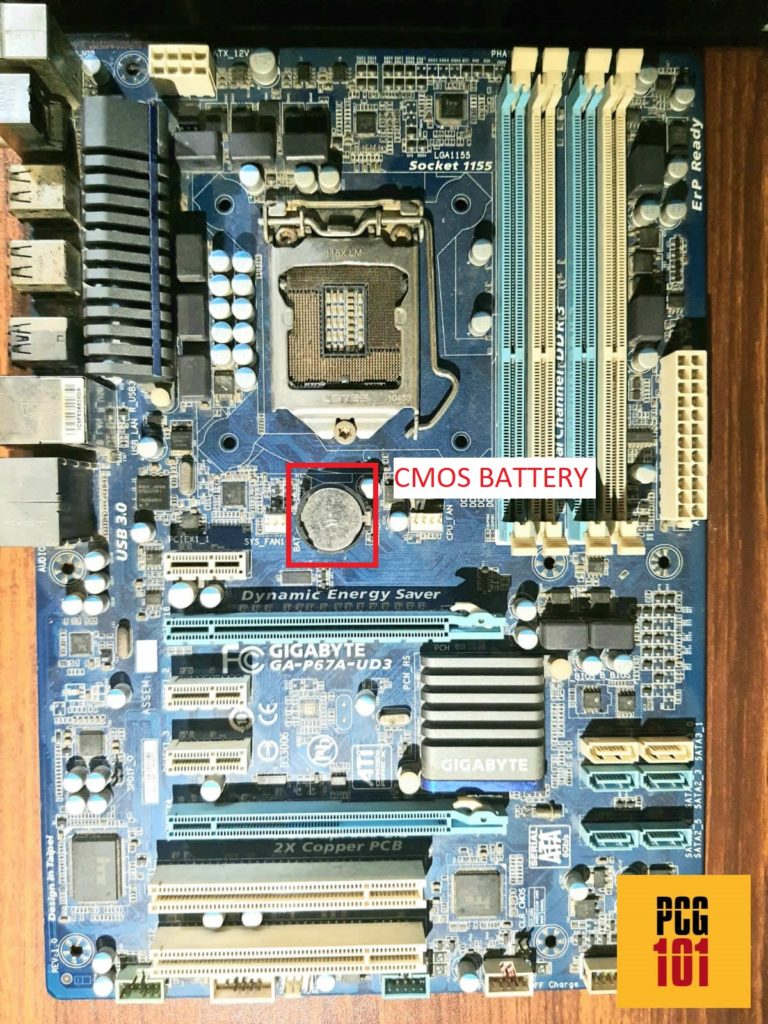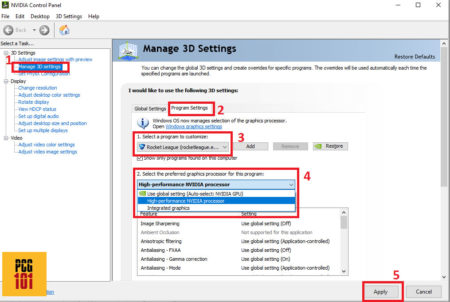Easy Way to Switch Between Integrated Gpu and Dedicated Gpu on Desktop
There are many methods for switching your PC to use integrated graphics instead of the dedicated graphics cards.
You can, for instance, remove the dedicated GPU in case of desktops, you can also disable the dedicated GPU from the device manager or use the dedicated GPUs control panel to set which apps use integrated or dedicated graphics card.
In this article, I will comprehensively talk about how to switch to integrated graphics. Generally, the solution is fairly simple, however, with each method there are certain caveats to take note off.
So without further ado, let us get started.
How to Switch to Integrated Graphics?
There are four simple and easy to switch to integrated graphics on a PC:
- Remove the dedicated GPU (works on desktops)
- Disable the dedicated GPU in the Device Manager
- Use the Dedicated GPU's Control Panel to Set Preferred Graphics Card
- Use the BIOS to Enable the Integrated Graphics
1. Remove the Dedicated GPU (On Desktop)
If your dedicated graphics card is malfunctioning or damaged, then you will obviously need to switch to the integrated graphics card in order for the display to work.
The easiest way to switch to an integrated graphics card on a desktop would be to simply remove the dedicated graphics card from the PCIe slot on the motherboard.
Here are the steps on how to remove GPU and switch to iGPU
Remove the GPU from the Motherboard
You will need to open up your desktop case, find the graphics card installed in one of the PCIe slots and remove it.

Make sure you press the latch/ slot clip to unlock your dedicated graphics card from the PCIe slot.
Also Read: How to Unlick PCIe Slot Clip/Lock?
Plug Your Monitor Cable Into the Motherboard's Video Output Port
Next, you will need to plug your monitor into the motherboard's video output ports.

Most of the newer motherboards often have multiple type of video output ports including VGA, HDMI, DP.
Caveat 1: You Need To Have a CPU with an Integrated Graphics Card
One of the most important point to take note off in this method is that you need to a have a CPU with a integrated graphics card in the first place to powerup the video output ports on your motherboard.
Intel "F" series CPUs such as the Intel Core i7 12700KF DO NOTfeature an integrated graphics. Similarly, with AMD, only the "G'" series CPUs such as the AMD Ryzen 5 3400G feature integrated graphics, the rest do not.
Hence, if your CPU lacks an iGPU, the video output ports on your motherboard will NOT work.

Caveat 2: You Need to Have a Motherboard with Video Output Ports
It goes without saying that you will need to have video output ports on your motherboard in the first place to use the integrated graphics of your CPU.
Motherboard with no video output port means no switching to integrated graphics.
Additionally, if your motherboard lacks the right compatible port on your monitor, then you will need to make an investment on an adapter such as HDMI to VGA or DVI to VGA etc.
Caveat 3: Sometimes a BIOS Reset Maybe Required
In majority of the cases, removing the dedicated graphics card from the motherboard will automatically switch your PC to iGPU (granted you have plugged your monitor into the motherboard's video output port).
If in case your monitor does not display anything, then try resetting the BIOS.
In order to reset BIOS, simply unplug the PC from the wall socket. Wait for a few seconds and then remove the CMOS battery from the motherboard. Wait again for a few seconds and then plug the CMOS battery back into its place.

This will reset your BIOS and can work as a fix for no display issues with integrated graphics.
Also Read: How to Reset BIOS?
2. Disable Dedicated GPU in Device Manager
Another fairly simple way to switch to integrated graphics card is to disable the dedicated graphics card from the Device Manager.
You can access Device Manager by Right-Clicking "This PC" -> "Manage" and then selecting Device Manager from the left-hand menu.
In the Device Manager, open the "Display Adapters" section.
Here locate the dedicated graphics card. In this case, the dedicated graphics card is the NVIDIA RTX 3070.

Select it and then from the top menu press the "Disable Device" button.
You will then be prompted with a confirmation message. Press "Yes".
This should disable the dedicated GPU and hence forth running all applications would use the integrated graphics.
You can always reenable the dedicated graphics card using the same procedure.
3. Use the GPU Control Panel to Set Preferred GPU for Apps
You can also use the dedicated graphics cards control panel to manage the preferred graphics card for a selected app.
For NVIDIA, head over to its control panel and the select the "Manage 3D Settings" from the Left-Hand menu.

Here, select the "Program Settings" Tab.
From the Program Settings Tab, select the Application you wish to set a preferred graphics card for.
Here for instance, I have "Rocket League" selected.
Finally, from the "Select the Preferred Graphics Processor for the Program" drop-down menu select "Integrated Graphics".
Press "Apply". Henceforth, running Rocket League on my PC will always utilize the integrated graphics.
Also Read: Is a 2GB Graphics Card Good for Gaming?
4. Enable On Board Graphics Through BIOS
The final, and also the most reliable method, is to use BIOS.
It should be noted that navigating through BIOS is a bit tricky and incorrect settings can harm your PC.
Therefore, be careful when making changes and if not sure, always consult with an expert.
You should also note that BIOS is different from manufacturer to manufacturer. Additionally, Laptop BIOS offers limited control where as Desktop BIOS are a bit more robust.
So basically, in your BIOS, you need to look for settings related to enabling or disabling "Onboard Graphics".
Unlike on laptops, on desktops, the integrated graphics often get disable when a dedicated GPU is plugged in.
Through certain BIOS versions, this can be changed by enabling the "onboard graphics".
This not only enable the integrated graphics for you, but also allows you to use the video output ports on the motherboard simultaneously with the dedicated GPU's video output ports.
Read in Detail: How to Use Motherboard HDMI with Graphics Card?
Final Words
I covered several ways on how to switch to integrated graphics in case if your dedicated graphics card is malfunctioning. If you are familiar with more ways to switch to integrated graphics, let me know in the comments below.
Source: https://pcguide101.com/gpu/how-to-switch-to-integrated-graphics/
0 Response to "Easy Way to Switch Between Integrated Gpu and Dedicated Gpu on Desktop"
Post a Comment